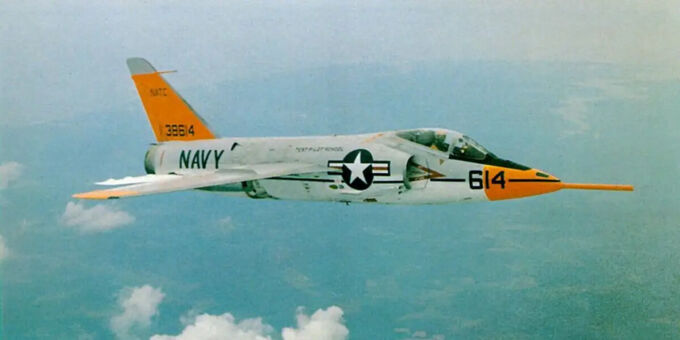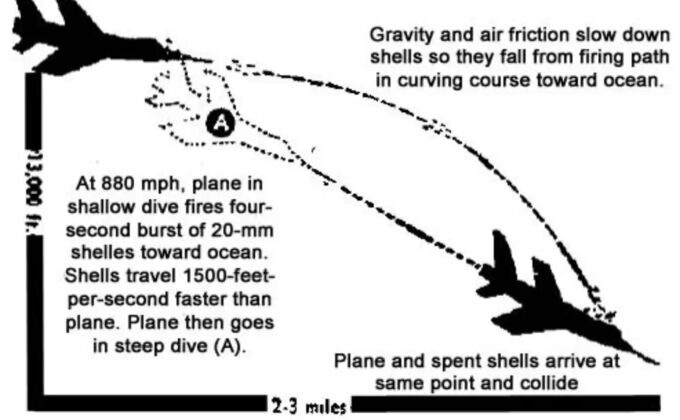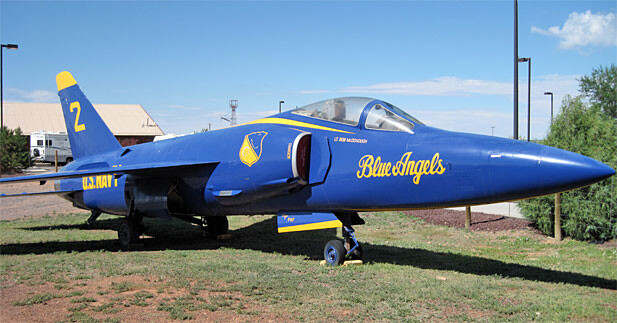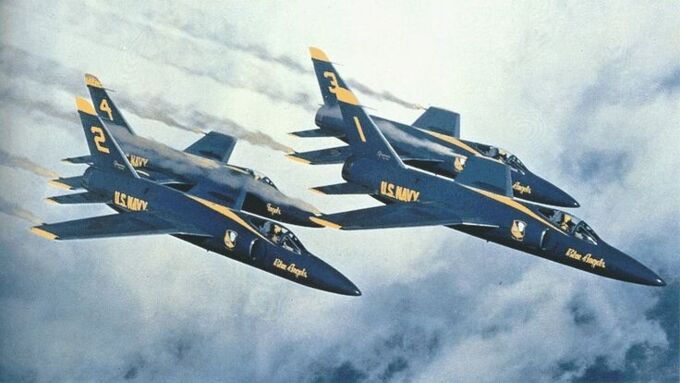The Grumman F11F-1 Tiger was a supersonic fighter jet for the US Navy, serving for only a brief 5-year period from 1956 to 1961. The F11F-1 is remembered most by an operational incident where it 'shot itself down', the first jet aircraft to ever do so. Originally developed as an improvement for the F9F Cougar, the F11F-1 incorporated the transonic area rule, all-moving elevators and leading-edge slats to improve supersonic maneuverability. Despite its impressive design the Tiger suffered from high accident rates and was ultimately replaced by the much more well-known F-8 Crusader in Navy service after 1961.
Early development and design
In 1952, development of the F11F-1 started as the privately funded G-98 project which aimed to modernize the F9F Cougar. Following the Korean War, the U.S. Navy recognised the need for a Navy jet with supersonic capabilities. However, engineers at Grumman realized that the Cougar’s airframe could not be adapted for supersonic flight. Thus, a new design that utilized the transonic area rule to reduce drag at near supersonic speeds was pursued, alongside folding wingtips for ease of storage on aircraft carriers.
During the late 1940s and early 1950s, wave drag proved to be a significant problem in the quest for developing supersonic aircraft. Wave drag is induced by shockwaves caused by changes in pressure and density, which occur when the aircraft approaches the speed of sound. These shockwaves were the result of air not being able to move out of the way of the aircraft in time, which caused oscillations and severe aircraft strain.
The solution came in the form of the Area Rule, formulated by Richard Whitcomb of NACA in 1952, which stated that to minimize wave drag the cross-sectional area of an aircraft should be connected smoothly. This meant that the Grumman engineers needed to thin the fuselage near the wings, to maintain a smooth cross-sectional area distribution, thus creating a fuselage that resembled a glass bottle of Coke.
To enhance supersonic flight performance, the elevators were all-moving, much like the modern-day F-16. Furthermore, Grumman engineers decided to implement leading-edge slats and spoilers instead of ailerons due to the increased low-speed performance needed to land on Navy carriers while preserving agility at higher speeds.
Impressed by the design, the Navy placed an order for two prototypes in 1953. The first prototype took to the skies on July 30, 1954, and nearly achieved supersonic speeds with its non-afterburning Wright J65-W-6 turbojet engine. The second prototype, equipped with the afterburning J65-W-18 engine, broke the sound barrier, becoming the second supersonic aircraft operated by the U.S. Navy after the F4D Skyray.
Test flight 41
On September 21st, 1956, the aircraft was on its 41st flight to perform high speed firing tests of its four 20mm Colt Mk 12 cannons. Test pilot Tom Attridge was piloting the aircraft at 22,000ft (~6.7km), who then engaged the afterburner to go supersonic in a 20-degree dive to fire a four-second burst at 13,000ft (~4km) After waiting a few seconds for the cannons to cool down, he fired a second burst. However, not long after he finished firing, his aircraft shook violently, with the front windshield shattering and the engine started losing power. After lowering his landing gear, the engine suddenly lost all power, and Attridge was forced to make a crash landing less than a mile short of the runway and managed to escape his burning aircraft despite some injuries and was rescued shortly after.
The post-crash investigation concluded that the F11F-1 shot itself down with four rounds. The bullets hit the nose cone, windshield, engine compressor and in the air intake. During the landing when the flaps and gear were extended, the vibrations were enough to dislodge the bullet in the air intake which was sucked into the engine causing a complete loss of engine power.
Operational service
In 1956, the F11F-1 Tiger entered into active U.S. Navy service in two versions, the long-nose and the short-nose. 42 of the short-nosed F11F-1 were produced and were the first to enter into active service. These included 6 evaluation aircraft used for military trails before entering service. After the decision to incorporate an AN/APG-30 gun ranging radar, the nose cone was elongated by 60 centimeters which added 1000 pounds of weight. Notably the long-nosed versions also had a distinctive swept-wing extension at the front of the wing root. 157 of the long-nosed “Tigers” were produced however the radar was never installed due to continuous delays in the development.
The last two production long-nosed “Tigers” were converted into the Super Tiger which used the J79-GE-3 engine. This was the same engine found on the U.S. Air Force’s F-104A aircraft. This engine produced approximately 18,000 pounds of force, almost double the F11F-1's J65 engine, and allowed the Super Tiger to achieve a maximum speed of Mach 2.04. However, the program was discontinued due to the increasing cost of development and the emergence of more advanced fighters like the F-4 Phantoms.
Throughout its 5 years of operational service in the U.S. Navy, the F11F-1 was deployed aboard the Essex-class and Forrestal-class aircraft carriers. However, its service history was plagued by a high accident rate, 22 pilots and 4 ground crew lost their lives due to crashes and a further 6 pilots perished in the Blue Angels aerobatics team.
In 1961 the U.S. Navy slowly started to phase the F11F out of service, in favor of the superior F-8 Crusader. Nevertheless, both the short and long-nosed F11F-1s were flown by the Blue Angels aerobatics team all the way till 1969 when it was ultimately replaced by the F-4 Phantom.
References
Meyer, C., & Ginter, S. (1997). Grumman F11F Tiger.








